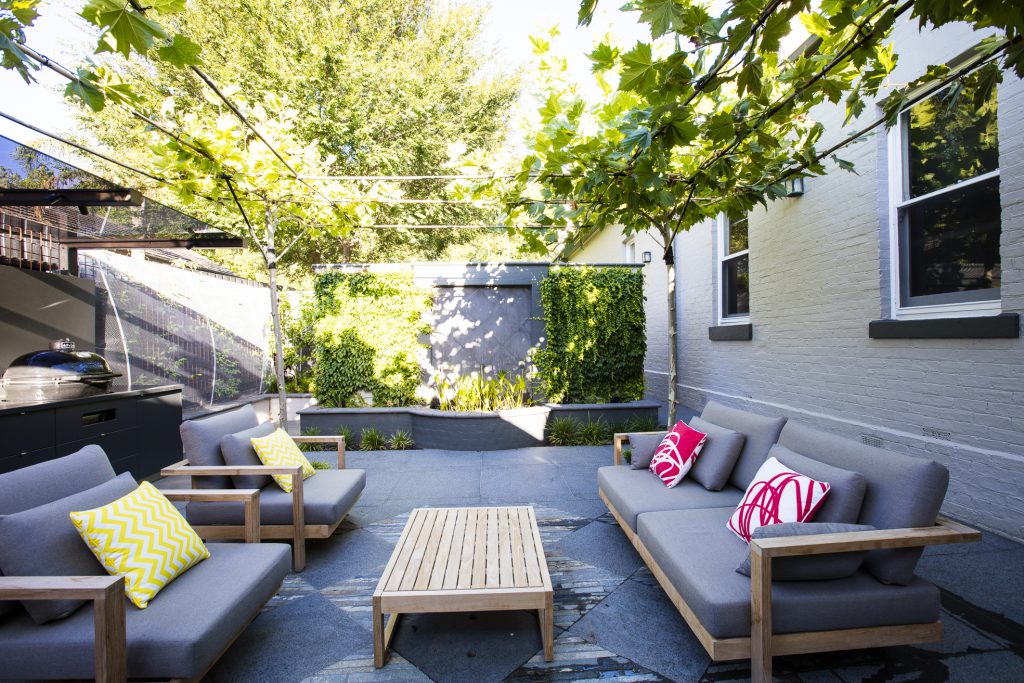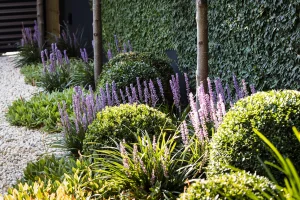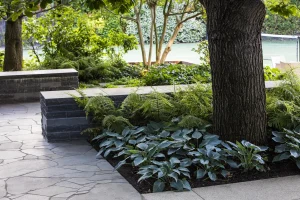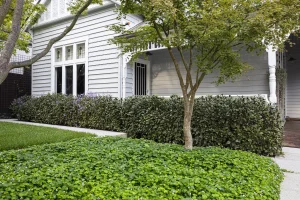We love our light-filled outdoor spaces but balancing light with excessive sun can be a tricky landscape design challenge.
Ian Barker explains that establishing where the sun is positioned at different times of the day and year is crucial information for a garden designer.
‘We can’t possibly design comfortable outdoor spaces, especially in our climate, without this basic information,’ Ian says. ‘For example, the west side of buildings can be extremely hot as it’s blasted by afternoon sun.’
Garden designers also note that as the sun’s arc is lower in the sky in winter, utilising northern winter sunshine can be desirable. Yet, the south side of buildings can often be in considerable shade for most of the year.
What the sun is doing at any given time of the day or year is just one factor in the light and sun balance. Buildings and trees, for example, will also have an impact on where sun and shade falls.
‘This forms part of the initial site analysis,’ says Ian, ‘and once this information is gathered, then a garden designer can decide where to take advantage of the sun and where to provide protection from it.’
Sun information is not just for us, it allows for appropriate plant selection and placement too, which of course adds to the enjoyment of those outdoor spaces.



